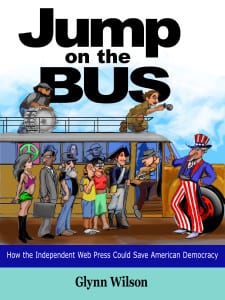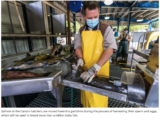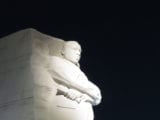“I can see clearly now … I can see all obstacles in my way. Gone are the dark clouds that had me blind. I think I can make it now, the pain is gone. All of the bad feelings have disappeared. Here is the rainbow I’ve been prayin’ for. It’s gonna be a bright, bright sun-shiny day.”
— Johnny Nash, 1972
The Big Picture –
By Glynn Wilson –
MOBILE, Ala. — I can see clearly now, thanks to a little film just out on Netflix.
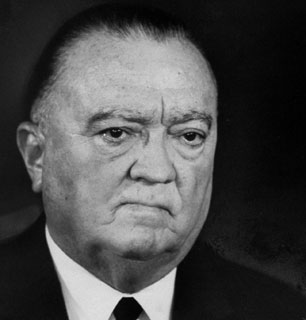
FBI Director J. Edgar Hoover
On March 8, 1971, eight anti-war activists, fed up with the lack of results from non-violent protests, broke into an FBI office in Media, Pennsylvania, a town just outside Philadelphia.
Before there was Wikileaks or Edward Snowden, they took hundreds of secret files in the middle of the night. They went through them and found clear evidence that Herbert Hoover’s FBI was illegally spying on law abiding Americans. They made copies and mailed them to newspapers and television news stations, most of which just turned them back over to the FBI as stolen, secret documents. That included the New York Times and CBS News.
But the Washington Post had an internal debate and published a front page story that showed the FBI’s vast and illegal regime of spying and intimidation of Americans who were simply exercising their First Amendment rights of free speech to dissent from what their government was doing in Vietnam.
They picked the night of the “Fight of the Century” boxing match between Muhammad Ali and Joe Frazier to do their break in at a small FBI office. Calling themselves the Citizens’ Commission to Investigate the FBI, they picked the lock on the door and took every file in the office, loaded them into suitcases, and walked out.
The heist yielded a trove of damning evidence that proved the FBI was deliberately working to intimidate civil rights activists and Americans nonviolently protesting the Vietnam War. The most significant revelation was an illegal program overseen by lifelong FBI director J. Edgar Hoover known as COINTELPRO – the Counter Intelligence Program.
Despite searching for the people behind the heist in one of the largest investigations ever conducted, the FBI never solved the mystery of the break-in, and the identities of the members of the Citizens’ Commission to Investigate the FBI remained a secret.
Until now. You should watch and read about the film 1971.
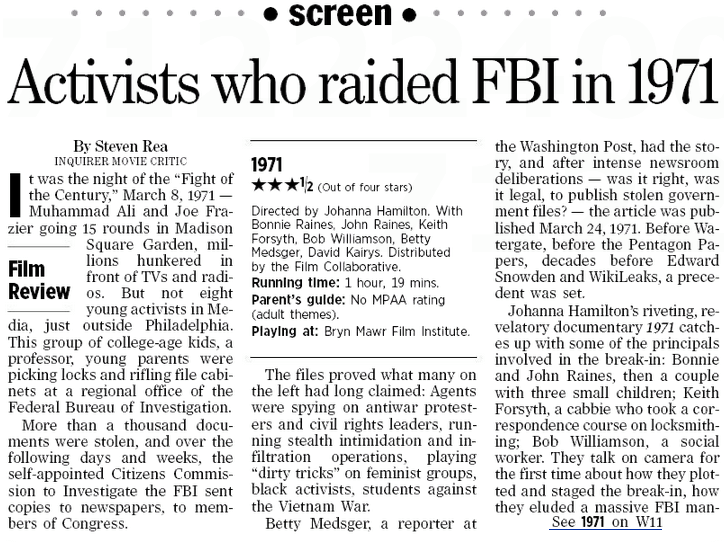
Coming Into Focus
Now, you may ask, how does this make everything come into focus for me?
Well, for starters, even the first ever Congressional investigation of America’s intelligence community in the wake of the break in did not end the COINTELPRO program. It continued under Presidents Richard Nixon, Geral Ford, waned under Jimmy Carter, then was picked back up again by Ronald Reagan and George H.W. Bush in the 1980s. I was there, the subject of investigation and harassment then. It continued under Bill Clinton and George W. Bush. And it continues under President Barack Obama. Maybe it’s not his fault. But maybe he couldn’t do anything to stop it considering the threats on his life.
It’s still going on today and I’m still a target.
Here’s the story.
When I first got a job as a newspaper reporter in 1984, an ironic year considering George Orwell’s book of the same name, I had run ins with spooks in the Baldwin County Courthouse in Bay Minette, Alabama. The newspaper was owned by a guy named Terry Everett, who would later go on to run for Congress and serve as the public relations agent for the military industrial complex out of Enterprise, Alabama, for many years. He had purchased The Baldwin Times from a Bay Minette patriarch named James “Jimmy” Faulkner, who kept an office right around the corner from the newsroom on the courthouse square.
There were times when it became obvious that our mail was being read and that we were being played by law enforcement sources on stories, but what was a cub reporter to do? At that time I just went along with the program and pretty much did what I was told, although I did manage to break a few important stories there. You can read more about that in my new memoir, just out on Kindle.
Besides, as I would “learn” in the socialization process, “reporters know they are always under survielance. It is a fact of life.”
That’s what they say anyway, as an excuse not to try to do anything about it and jeopardise their careers.
Reagan’s war in Nicaragua was just getting started back then. War games were going on in Baldwin County. I wrote about it.
In 1985, I was recruited for a job at a daily newspaper in North Alabama, and there I was subjected to the kind of establishment socialization all political reporters run across at some point early in their careers — if they try to step on establishment toes. After a year of that, I figured I had had enough of establishment, corporate newspapers and sued in federal court under the Fair Labor Standards Act. We won the case and set a precedent in the Eleventh Circuit establishing that newspaper reporters, photographers and editors are hourly employees entitled to overtime pay and other provisions of the law.
That story is detailed in the book as well, although it was written up in the Columbia Journalism Review.
When I moved back to my home town of Birmingham and opened a book store, newsstand, coffee bar on Southside, it became an outpost of dissent against the war in Central America and the so-called “Conservative Tide,” and we became the target of COINTELPRO. Those stories are also in the book.
When I was basically forced out of business by the “powers that be,” I moved back to Gulf Shores and somehow enjoyed a certain level of freedom as a reporter and writer for awhile, mainly covering the environment as a new beat in American journalism. But that didn’t last either. Dark forces in the military, the intelligence community and the growing Republican Party orchestrated my demise, again. Those stories are also in the book.
I’ll tell you one story not in the book. Right after the first Gulf War started in August, 1990, when President H.W. Bush sent more than 500,000 U.S. troops to save Kuwait from the invading Iraqi army, I got an assignment to interview a man who had just opened a bar on Perdido Key called Peanuts. It was the kind of place you could eat peanuts and drop the shells on the floor. He told me a fantastic story, much of which I could not print in the newspaper.
He had been the head basketball coach for the Kuwaiti national basketball team until one week before the invasion. He had been very close to Saddam Hussien when he attended the game between Kuwait and Iraq. I wondered at the time how he ended up going from being the Kuwait basketball coach to owning a bar down the street from the Flora-Bama. But then it occured to me. He must have been CIA and on a team tasked with investigating the possibility of assassinating Saddam. But Bush faced public heat for allegations that the CIA was engaged in assasinating foriegn leaders.
I remember the president denying such a thing ever went on at the time. So he made the decision to send in ground troops instead, and the assassination team was pulled out. What other possibile explanation could there be for how this guy ended up a bar owner on the Gulf Coast instead of taking another coaching job somewhere else? He most likely had connections to the Sports Academy in Daphne, which everybody who was anybody knew at the time was a CIA front operation.
When my good friend Spider Martin came down to Gulf Shores to rescue me in his big white Ford van with the canoe on top, we went back to his place on the Southside of Birmingham and spent the next few months organizing his collection of civil rights photos and negatives and tried to get a museum to buy them and protect them for posterity. But the time was not right yet.
So I moved back to Tuscaloosa and entered graduate school and began a career of conducting academic research and teaching. That path led me to Georgia, Tennessee and ultimately New Orleans, Louisiana, all of which you can read about in the book. Things went pretty well through the rest of the 1990s.
But then COINTELPRO came back to bite my ass. After George W. Bush was handed the White House by the majority Republican Supreme Court in 2000, things began to change for the worse again. After the horrible events of September 11, 2001, the Republican Congress passed the Patriot Act and the domestic spying and harrassing the media began all over again.
Karl Rove and Dick Cheney were trying to transform America into a conservative, Christian country. One of the ways they did that was to attack university tenure and set about purging so-called “liberal” professors from college payrolls.
You guessed it. I was one of them. Those stories are also in the book.
But by then, I had a perfectly good free-lance journalism career going, writing for The Dallas Morning News, the Christian Science Monitor and then The New York Times. But that couldn’t last either, right? I guess I should have played it safe and kept my mouth shut.
Instead, I decided to investigate the short military career and early political career of George W. Bush and move to Washington, D.C.
George W. Bush’s Lost Year in 1972 Alabama
Next thing I know, I am back in Birmingham covering the Healthsouth trial of Richard Scrushy and then off the payroll of the New York Times for suggesting (accurately, it turned out) that he was going to be acquitted by that jury.
So I did what any real journalist would do as the economy for news was tanking and blogging software came on the scene. I launched an independent Web publishing career with a site called The Locust Fork News Journal. That went well for awhile, but then the Bush Justice Department decided to prosecute the Democratic Governor of Alabama, Don Siegelman. I covered the hell out of that story like no one else, and COINTELPRO came back to haunt me once again.
The CIA anonymous commenters began to harass me and say things about me all over the Web, including the comments at the Columbia Journalism Review (which later disappeared) and on a new blog in Alabama called the Political Parlor (now out of business thanks to the anonymous blog comments at Newhouse’s blog dot al dot com). They even came after me with Google and eventually Facebook and Twitter to try to discredit my reporting and claim I lied on my resume. No lies there.
It’s all true. And it’s all in the book.
Now, you want to see another example of how it is possible to stand up to these evil forces and practice watchdog journalism on the Web, still? Study this, and don’t forget to watch the videos and share.
If any of this finally convinces you that we have developed the right model for the future with the New American Journal @ NewAmericanJournal.Net, perhaps you would be willing to help by sending us a small donation in lieu of a subscription fee. It takes resources to do this. The corporations are not going to fund it.
Click here to make your Donation through PayPal
I can’t wait to see the day when “my people” finally get it and can see clearly. Maybe in about four years, when the newspapers finally give up and get out of the way.
“I can see clearly now … I can see all obstacles in my way. Gone are the dark clouds that had me blind. I think I can make it now, the pain is gone. All of the bad feelings have disappeared. Here is the rainbow I’ve been prayin’ for. It’s gonna be a bright, bright sun-shiny day.”
— Johnny Nash, 1972


